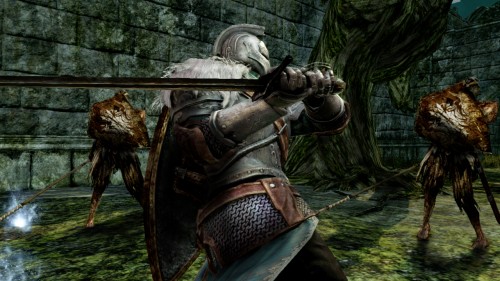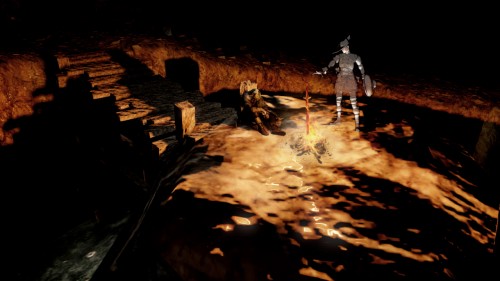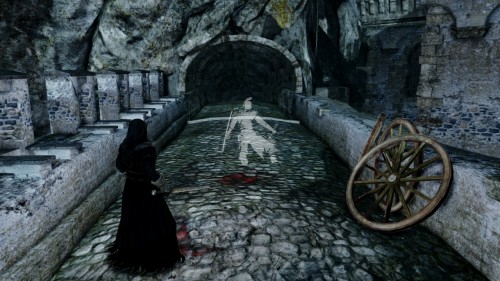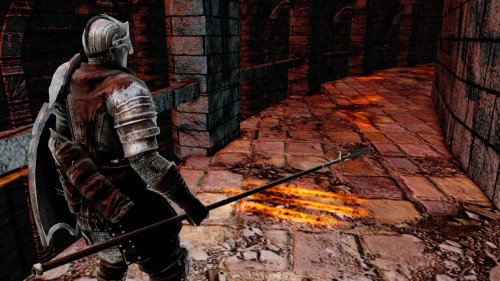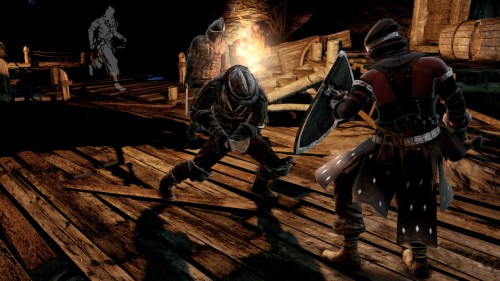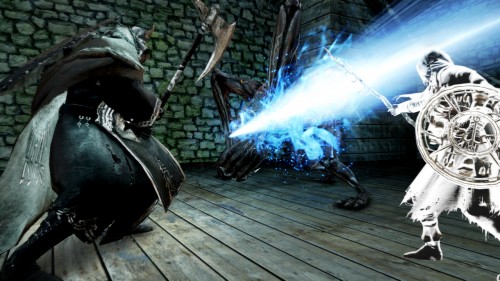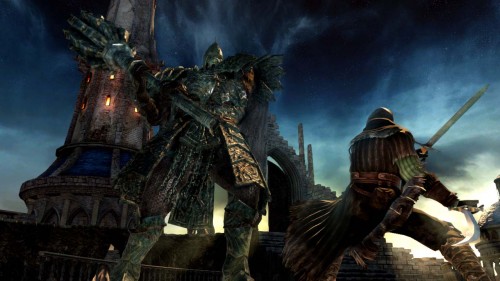Five minutes after I made my character and was released into the open world of Dark Souls II I was slain by an overpowered giant ogre. A trophy popped in the top corner of the screen called ‘This is Dark Souls’. It was a friendly reminder that over the next 50-plus hours, Death and I would become fairly close friends as I would meet my demise over and over again.
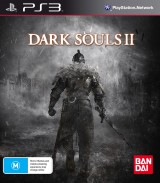
The Souls series as a whole has delivered something very rare in gaming these days and that something is challenge. A series known for its hard difficulty, steep learning curve and minimal hand holding could turn quite a few people away from the get go. Regardless, these factors are what make these games some of the best fantasy RPG’s on the market. From Software has built on the foundation of 2011’s Dark Souls to make for an excellently rounded, painstakingly difficult, and yet incredibly rewarding sequel.
It is clear from the start that the Souls series isn’t targeted at the casual gamer. Nothing really spells hardcore like being killed over and over by a bunch of explosive crazy mummies and wanting to put your controller through your television. These games are definitely for a niche audience, and a very patient audience at that. For those that don’t quit and never look back after the tenth, fiftieth or hundredth death, you will hopefully experience the feeling of when the game finally clicks. I know I experienced it during the first Dark Souls and it was great. You finally begin to understand the game and the mechanics and things finally start to fall in the right places. Don’t get me wrong, you will still die over and over again, although this is when you begin to learn from each death. These games give a different meaning to death; it isn’t just a game over screen, it’s more of a learning experience. Each death brings a better understanding of how you got there and what can you change next time to make sure it doesn’t happen again. These lessons make beating each boss all the more sweet when it finally happens.
Dark Souls II, like the other Souls games that came before it, doesn’t expand too much on the little story it offers on the surface. Within its depths however there is a fantastic and intricate story to be found in the ambiguous, yet decipherable item descriptions and the tales woven by the vast number of NPCs you will bump into along the massive journey. It is all within your hands how deep you will dive to experience this epic tale. You are thrown into a new world with as little as an armour set and a meagre weapon. Without the help of quest logs, mini maps or way points it is your choice what path to tread down or what fog gate to traverse through. The world is your oyster and it is up to you how to tackle it.
The story takes place in Drangleic, a gigantic beautiful open world that is ripe with diverse locations ranging from dense forests and massive high walled castles to underground forgotten tombs and the broken remnants of a long forgotten civilization. Drangleic, like Lordran of Dark Souls, offers a seamless open world that entices you to walk down every shadowy path, excited to discover what new areas lie before you, yet weary of the dangers that will surely block your path. Although Drangleic may seem as open as its spiritual predecessor Lordran, there are definitely a few areas that are not available until certain sections of the game are complete. Despite this happening in the original Dark Souls, it seems to happen earlier in Drangleic and gives the feeling of less freedom than the original.
In Dark Souls II you awake in what appears to be a shrine, stricken with the affliction that troubles the entire land of Drangleic, the curse of the undead. This is a curse that will keep you coming back to life even after experiencing death over and over again. With each death, it brings you closer to the eternal insanity of the hollows that stalk the earth and with each soul you collect, you will last that little bit longer before the inevitable doom of being fully hollowed. As you make your way out from the dark depths in which you awoke the world opens up to a bright, vibrant town set upon rocky cliffs as the sun beats down and lights up all that is before you. This area is Majula, a town that will act as somewhat of a hub for you to rest, level up and purchase new items. At the beginning Majula seems quite desolate with only a handful of people littering the area. As you progress further into the game a number of new faces will settle in Majula after meeting them along your journey. Within Majula lies a cloaked Emerald Herald who asks you to collect the 4 great souls and light their primal bonfires, and to face the King Vendrick. Along the way you will discover more about the curse that you are burdened with and what your true destiny is.
This cloaked Emerald Herald will remain a familiar face during the journey you are about to embark on as she serves as the new way to level up your character. Levelling up is quite similar to how it was in Dark Souls although instead of being able to do it at every bonfire it has to be done through this mysterious woman.
Souls are the only form of currency within the Souls series, they are used to both level up and buy new equipment. Another aspect that sets Dark Souls apart from other games is that when you die you lose all of your currency and the only way of getting your souls back is by returning to your place of death to retrieve them. The kicker is that if you die on your way back to your dropped souls they are gone forever. Trust me, with the amount of times you are bound to die in Dark Souls II this is going to happen more than a few times.
If you have experienced a Souls game before then you know what to expect, tough enemies and even tougher bosses. Famed for their unique, epic boss battles and their spectacular design, Dark Souls II is no different and does exceptionally well at delivering some amazing bosses. Not all of them deliver the same punch or presence that the bosses in Dark Souls delivered, although there is no question that you will encounter some expertly crafted and frustratingly unforgiving battles. Like the bosses, the enemies that are strewn across the varied settings are also hard to handle, no enemy within Drangleic is a walk in the park and if you give them an inch they will be sure to make the most of their opportunity. Letting your guard down can be the death of you in Dark Souls II and not knowing what is lurking around the next corner will constantly keep you on your toes.
The combat this time around is just as challenging as it was before, and with a huge variety of enemies you will be challenged in more ways than one. Whether it be using your speed to dodge and dispatch hulking turtle-like warriors, or wielding a greatsword to lay waste to the weaker quicker enemies. The variety of enemies challenge you to think of more ways than one to approach fights and it teaches you that some fighting styles are better than others. Even after I chose to be a knight I quickly learned that magic would help me greatly with some of the early tough enemies. Without being shackled to a certain character class I was able to level up my intelligence and attunement stats and I was slaying enemies with my soul arrows in no time.
With the many branching paths to explore in Drangleic you can often stumble upon areas or bosses that you should not have witnessed just yet, often resulting in your demise with the enemies barely lifting a finger. This forces you to back track to other suitable areas and return when your character is strong enough to take on these formidable foes. It makes those battles all the more satisfying when you are able to make your way back and serve up a bit of revenge.
There are a few changes that you will notice from Dark Souls to Dark Souls II, some obvious and some not so much. Bonfires have always acted as somewhat of a checkpoint; a place to rest up, regain health, spells and that all-important Estus flask (Dark Souls health potion). The power to warp between bonfires came late in the first Dark Souls game and yet the ability is available from the beginning of the game in this one which is a welcome change for newcomers of the series. Having said that, it does ultimately strip away some of the challenges of back tracking through old areas when you find that long sought after item in order to open up a new area.
Another new change, this one not so welcome at all, is that every time you die you lose a percentage of your health bar, making the game harder and harder with each death you suffer. Getting your health bar back to 100 percent is achieved by using a special item, a human effigy. For those that played Dark Souls these human effigies act like the item Humanity and are very important to your survival in the harsh world. Human effigies not only restore your health bar, they also return you to your human form and grant you the ability to summon. The next time you die you will return to being undead though and lose this ability. The ability to dual wield weapons has also been smartly implemented and being able to shift to a dual wield stance to execute with more power and precision is an empowering change that will often have you playing more offensively then defensively.
One of the major changes in Dark Souls II is the use of light; the player has the ability to trade out whatever was in their left hand for a torch. This adds a new dynamic to the game, and asks the question as to whether to opt for a well-lit environment or keep your shield or second weapon. Using a torch lets you see what lurks ahead and even have some enemies cower in fear at the flame in your left hand, but it comes at the expense of remaining fully able in battle. The use of light looks amazing in the varied environments and often shows how pretty the devastated world of Drangleic is.
The multiplayer in the Souls games is quite unique. Every player exists within the same world, and you will often notice silhouettes of players that have travelled this land before you roaming around the bonfires you rest at. The way that you speak to these other players is by writing short messages on the ground, these messages are found all over Drangleic and can be a way to help out the next weary traveller and let them know what surprises they have in store. Bloodstains are also found all over the map and when touched they will show the last ten seconds or a players life, another way to inform you what is hiding around the next corner. The real weight of the multiplayer comes in the form of the ability to invade or be summoned into another player’s world. When your player is human you can summon in other players to help with certain areas or boss fights or you can invade other player’s worlds as a dark spirit and kill them for their souls.
Covenants, depending on how much you care about them, can play a big part in Dark Souls II, especially on the multiplayer side of the game. There are a total of nine covenants to become a part of throughout Drangleic and each brings their own unique advantage to your time with Dark Souls II. Most covenants focus on PvP battles, whether it is invading others or being summoned in to lend a helping hand. There are covenants that allow you to summon in other players to do battle and some that are purely offline which will have you testing your strength in game. While some of these are quite similar to those from Dark Souls, there are some truly unique covenants to be found as well. The Rat King covenant hands you the ability to set traps for invading players, or the Company of Champions covenant will increase the difficulty of the game for those that enjoy a tougher challenge.
New Game Plus was a big factor in Dark Souls, it challenged you to harder bosses and made you strive to get the platinum trophy. New Game Plus in Dark Souls II feels almost like a new game altogether and it really shines. It isn’t just the bosses that get harder, there are also a myriad of new items to collect and new enemies to fight; it becomes a whole new challenge in itself. After the 40 odd hours it took for me to complete my first playthrough, I didn’t hesitate at all to dive straight back in and experience it all over again. I recommend this mode to anyone that wants to experience a whole new level of challenge as well as the completionists that want to experience everything that the game has to offer.
Dark Souls II is a worthy successor of the amazing game that came before it. With a few minor changes, some welcome, and some not as much, it adds new dynamics to an already well-crafted system. With the director of the first two games in the Soul series, Hidetaka Miyazaki, stepping away from the series, some long-time fans became a little hesitant with this new title. Although there is nothing to fear as the world of Drangleic is as equally beautiful and brutal as the world of Lordran was. From Software have delivered an amazing game that rivals its predecessor in almost every way.
https://www.youtube.com/watch?v=5cz-xB29Xis


















